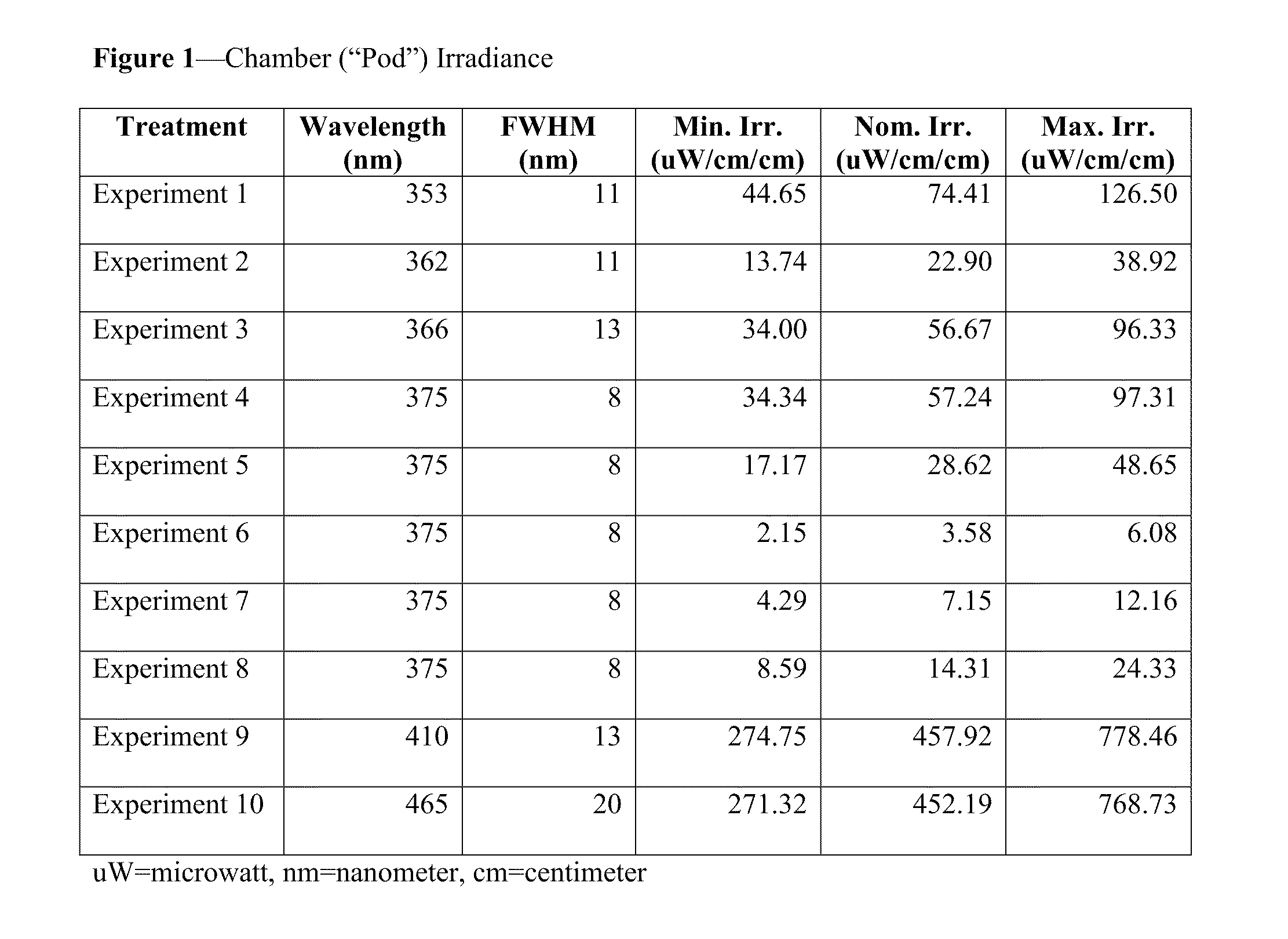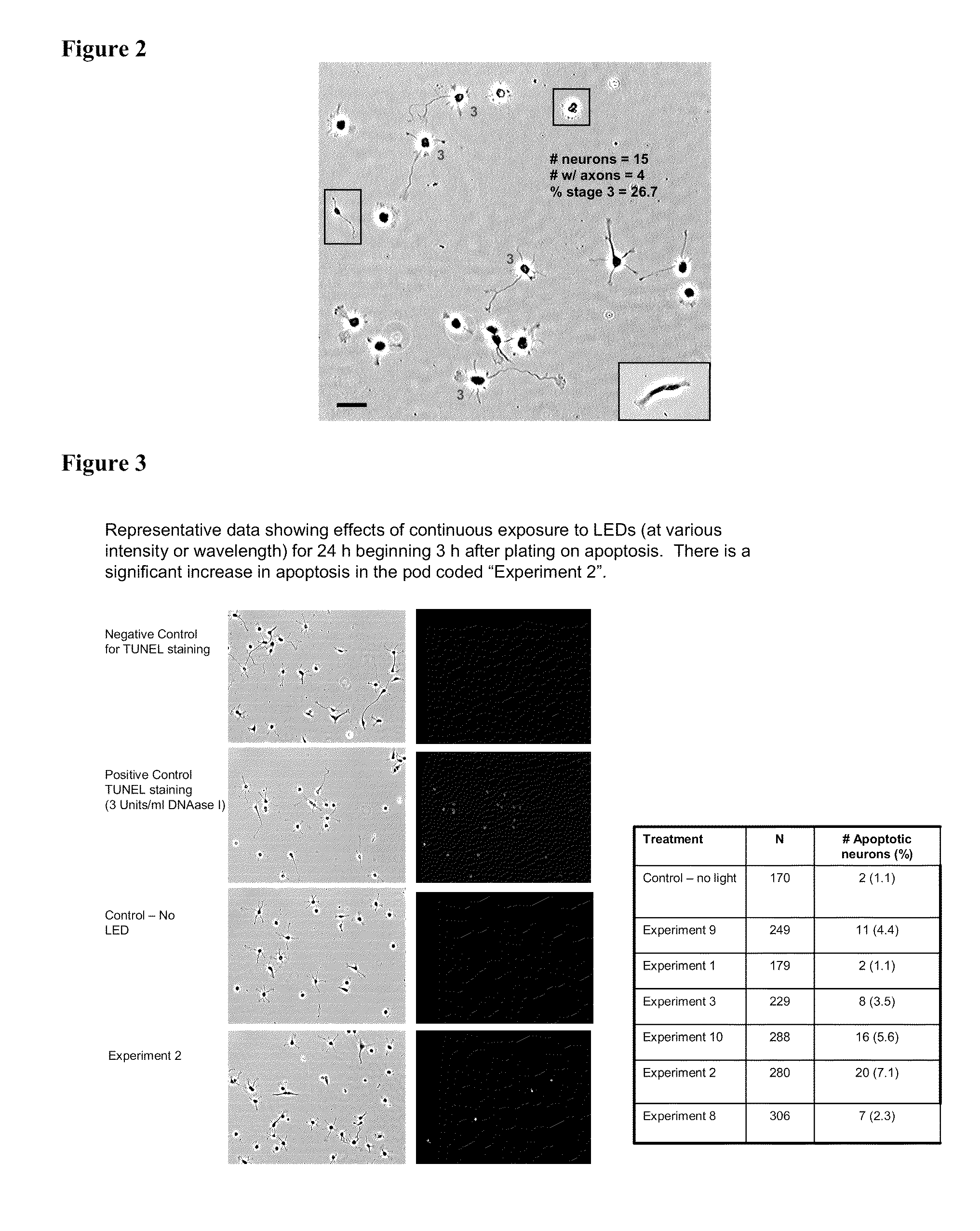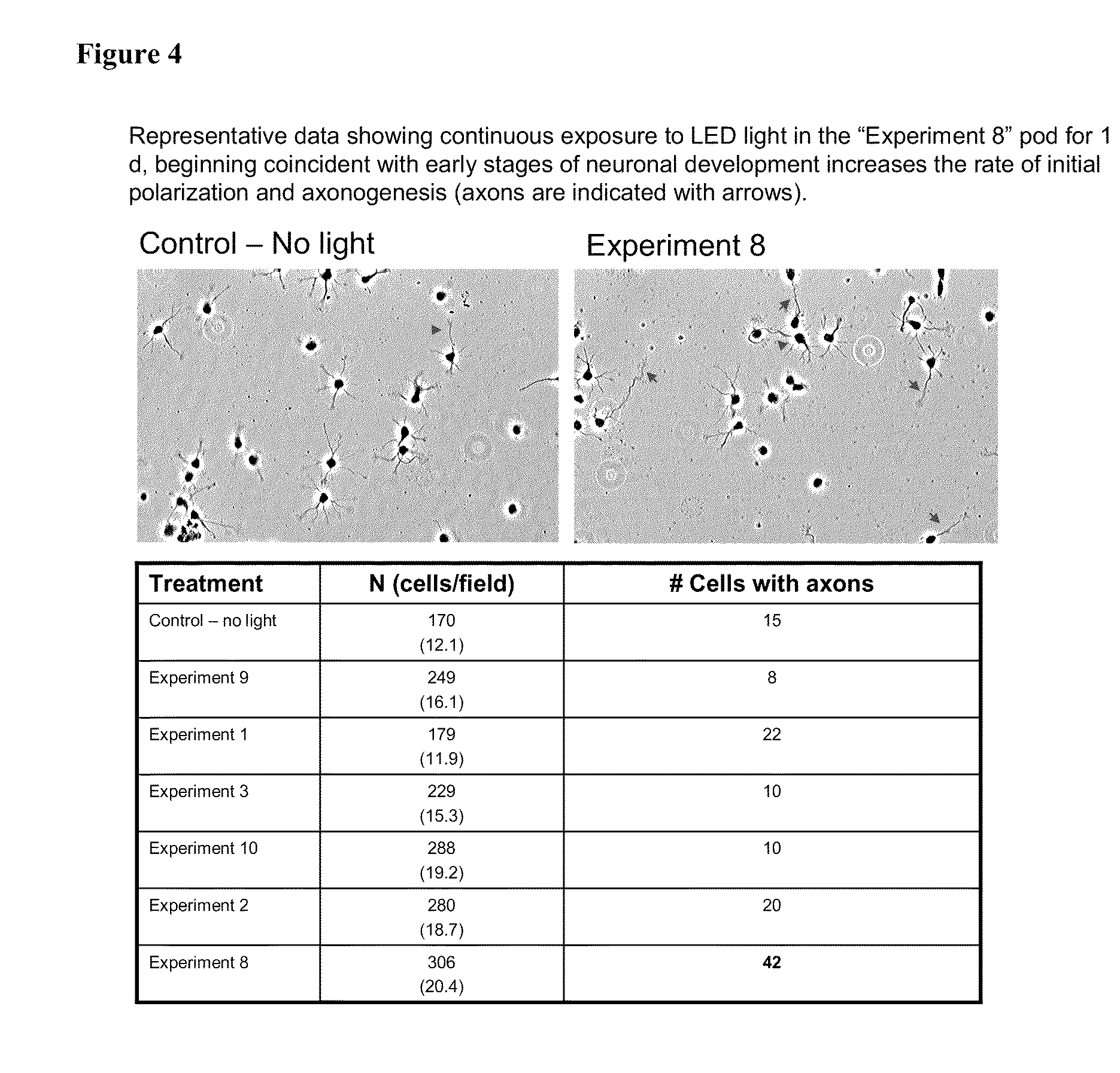Uva1-led phototherapy device and method
a phototherapy device and phototherapy technology, applied in the field of phototherapy, can solve the problems of increasing the exposure to uvb light, many scientific experiments and studies of uv exposure were handicapped by the limited capabilities of legacy light sources, and the quantity of undesirable quantity of phototherapy
- Summary
- Abstract
- Description
- Claims
- Application Information
AI Technical Summary
Benefits of technology
Problems solved by technology
Method used
Image
Examples
examples
[0591]Effects of LED on Hippocampal Neuron Survival and Morphogenesis In Vitro
[0592]Injury or degenerative conditions affecting the brain, spinal cord or peripheral nerves have a devastating impact on the quality of life for affected individuals. The experiments are focused on testing the safety and efficacy of LED phototherapy that interfaces with neurons and stimulate de novo or regenerative neuronal development. The data obtained contributes to the optimization of phototherapy devices designed for this purpose, as an example of device designs that enhance basic science investigation of the mechanism of LED effects on neural cell functions, such as dendritic remodeling, synaptic plasticity, and resistance to injury, ischemia, toxic environmental agents or metabolic conditions that are otherwise damaging to neurons. The LEDs used in this experiment included UV-LEDs.
[0593]New technologies to modulate morphogenesis, such as to promote morphogenesis, including aiding nerve regeneratio...
PUM
 Login to View More
Login to View More Abstract
Description
Claims
Application Information
 Login to View More
Login to View More - R&D
- Intellectual Property
- Life Sciences
- Materials
- Tech Scout
- Unparalleled Data Quality
- Higher Quality Content
- 60% Fewer Hallucinations
Browse by: Latest US Patents, China's latest patents, Technical Efficacy Thesaurus, Application Domain, Technology Topic, Popular Technical Reports.
© 2025 PatSnap. All rights reserved.Legal|Privacy policy|Modern Slavery Act Transparency Statement|Sitemap|About US| Contact US: help@patsnap.com



